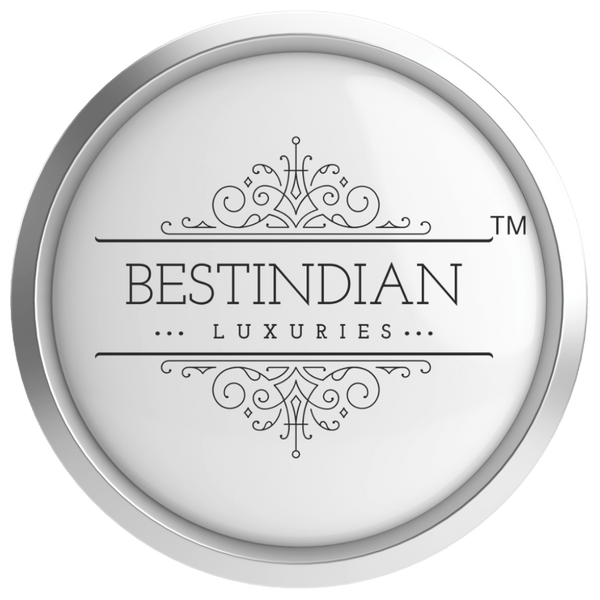
BestIndian
Moviestar™ Makeup Melter Cream
Moviestar™ Makeup Melter Cream
Couldn't load pickup availability
More than a cleanser, this is a ritual of restoration for your skin. Designed for sensitive skin in today’s high-definition, camera-ready world, our natural makeup remover cream melts away everything—stubborn waterproof mascara, heavy foundation, sunscreen, and even trapped pollutants—without stripping hydration. Unlike harsh wipes, it rinses away completely, leaving only hydrated, supple, and radiant skin, perfectly prepped for makeup or bare-faced confidence.
A natural makeup remover cream for sensitive skin that melts makeup, hydrates, and leaves skin radiant & camera-ready.
Dermatologically tested • Certified Natural • Carbon Neutral • Made in India
Please Note: Conscious Archive Item (60% Off)
- Manufacturing Date: January 2024
- Best Before: January 2026
- This item is part of our Conscious Archive Sale and is offered at an exceptional 60% discount due to its approaching best before date. It is final sale.
Share


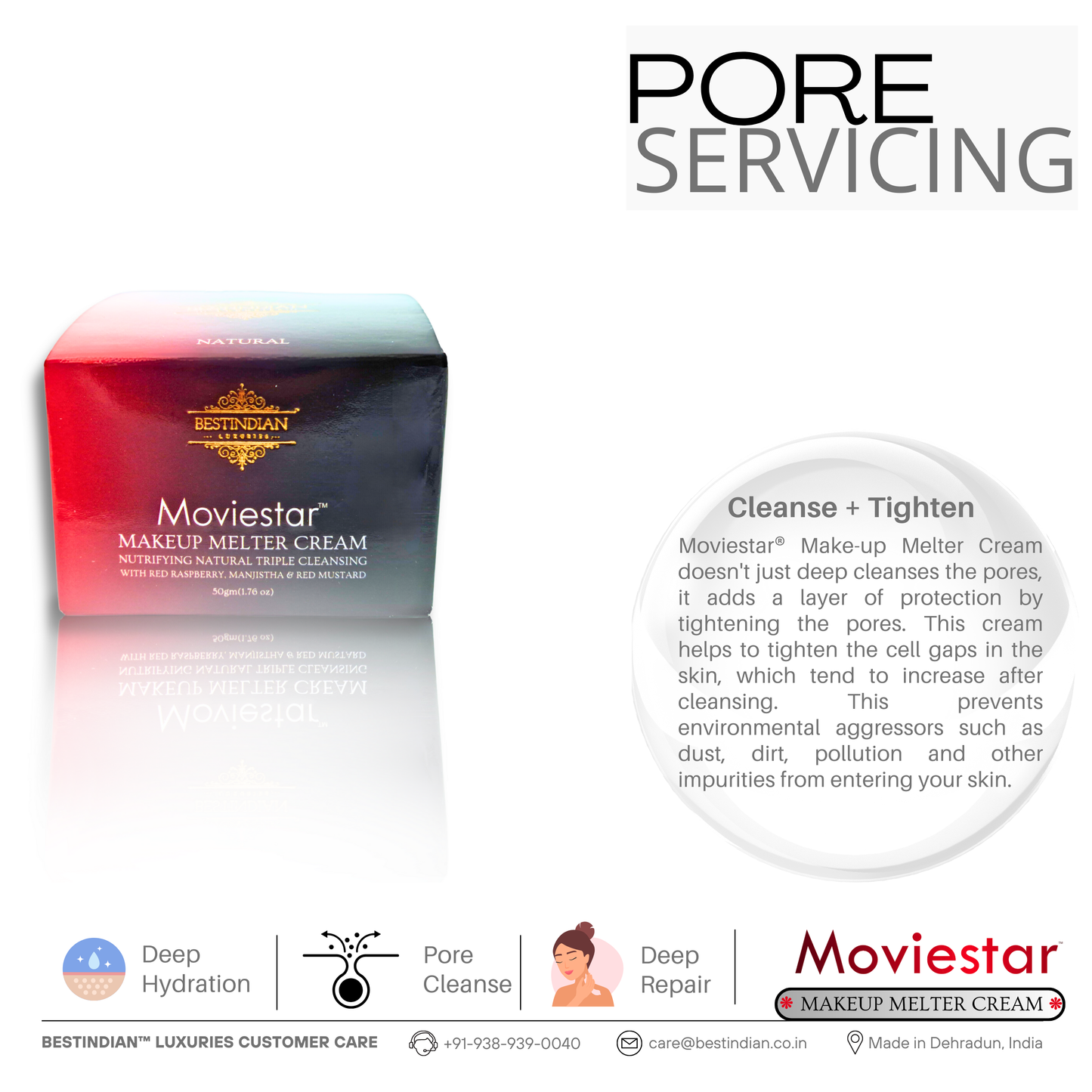

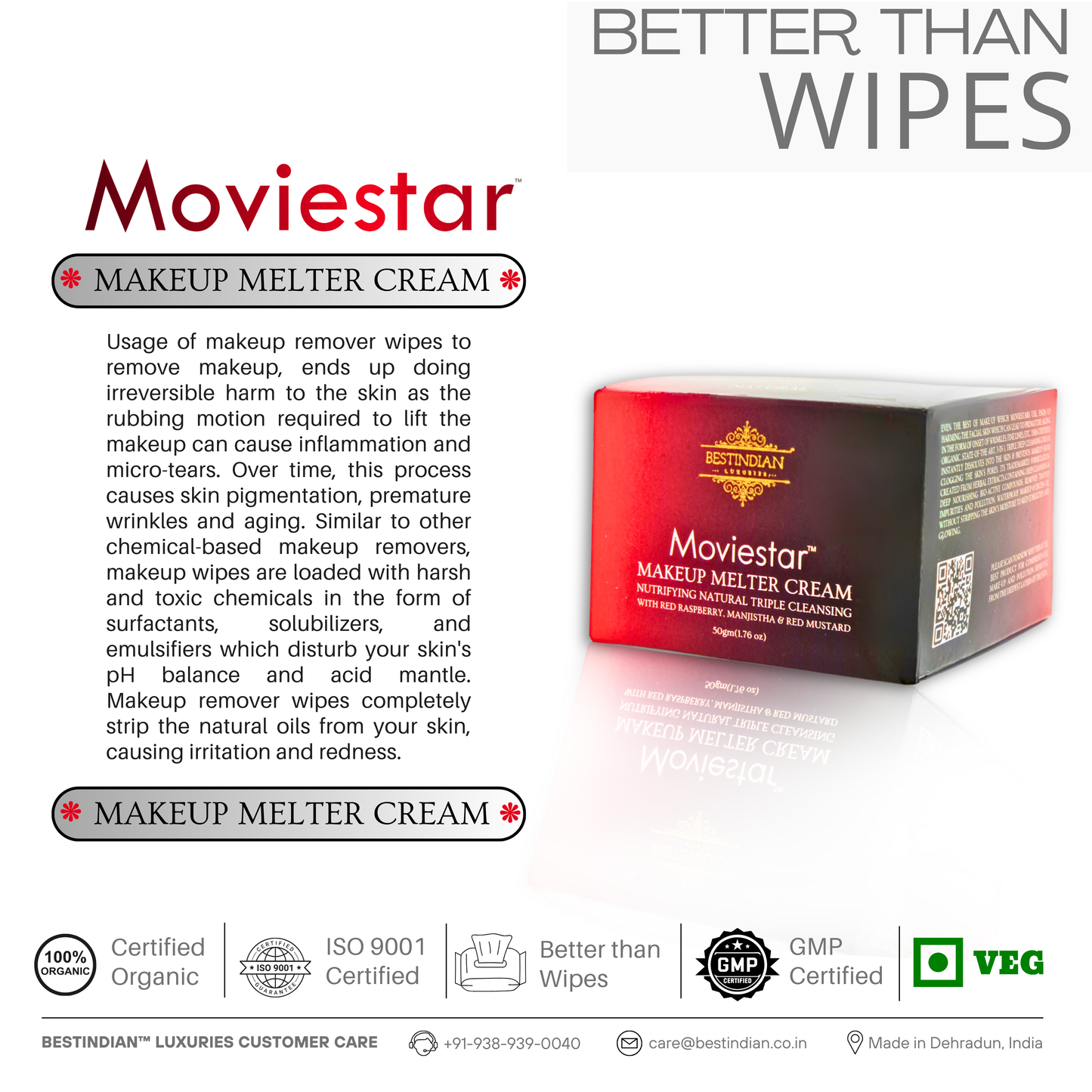




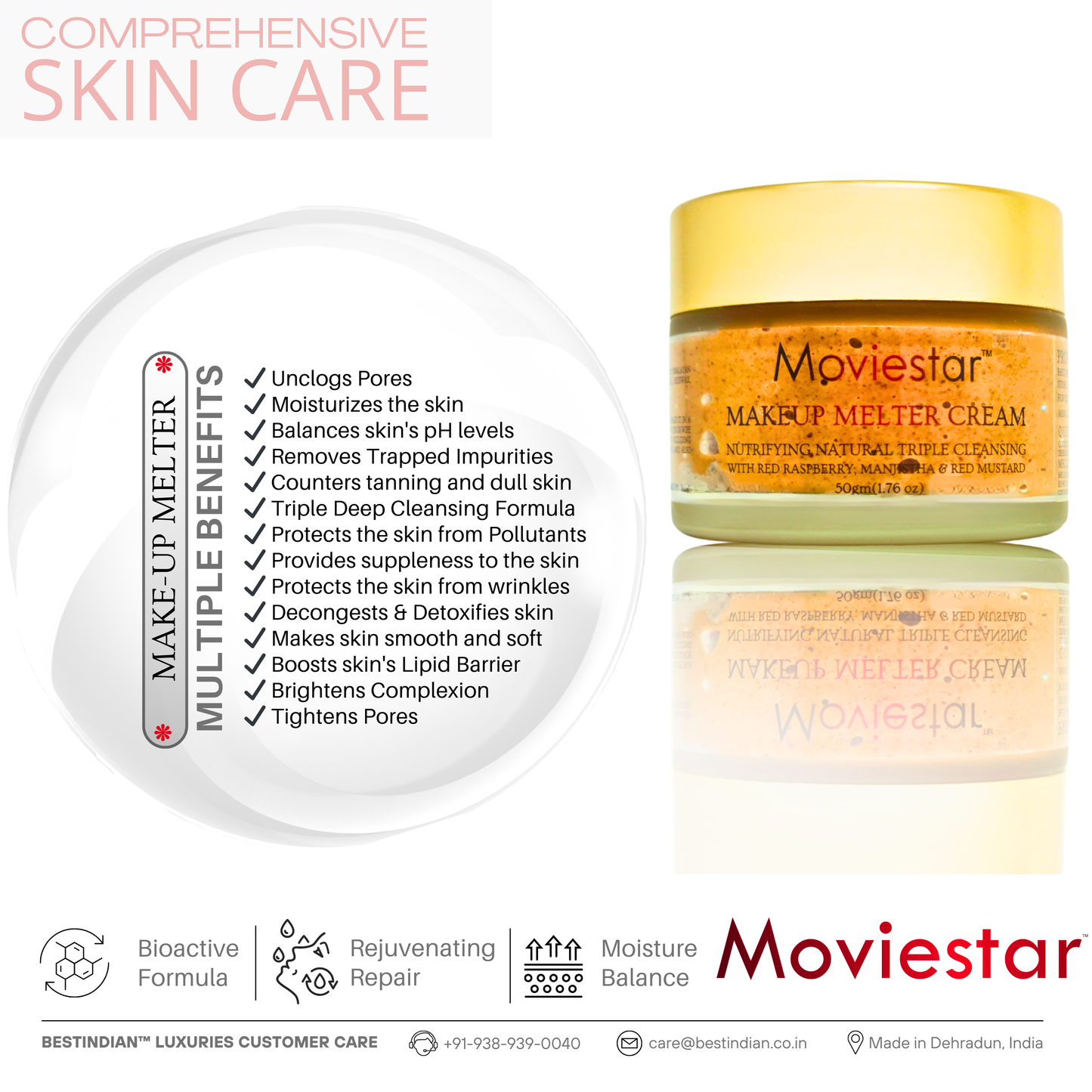


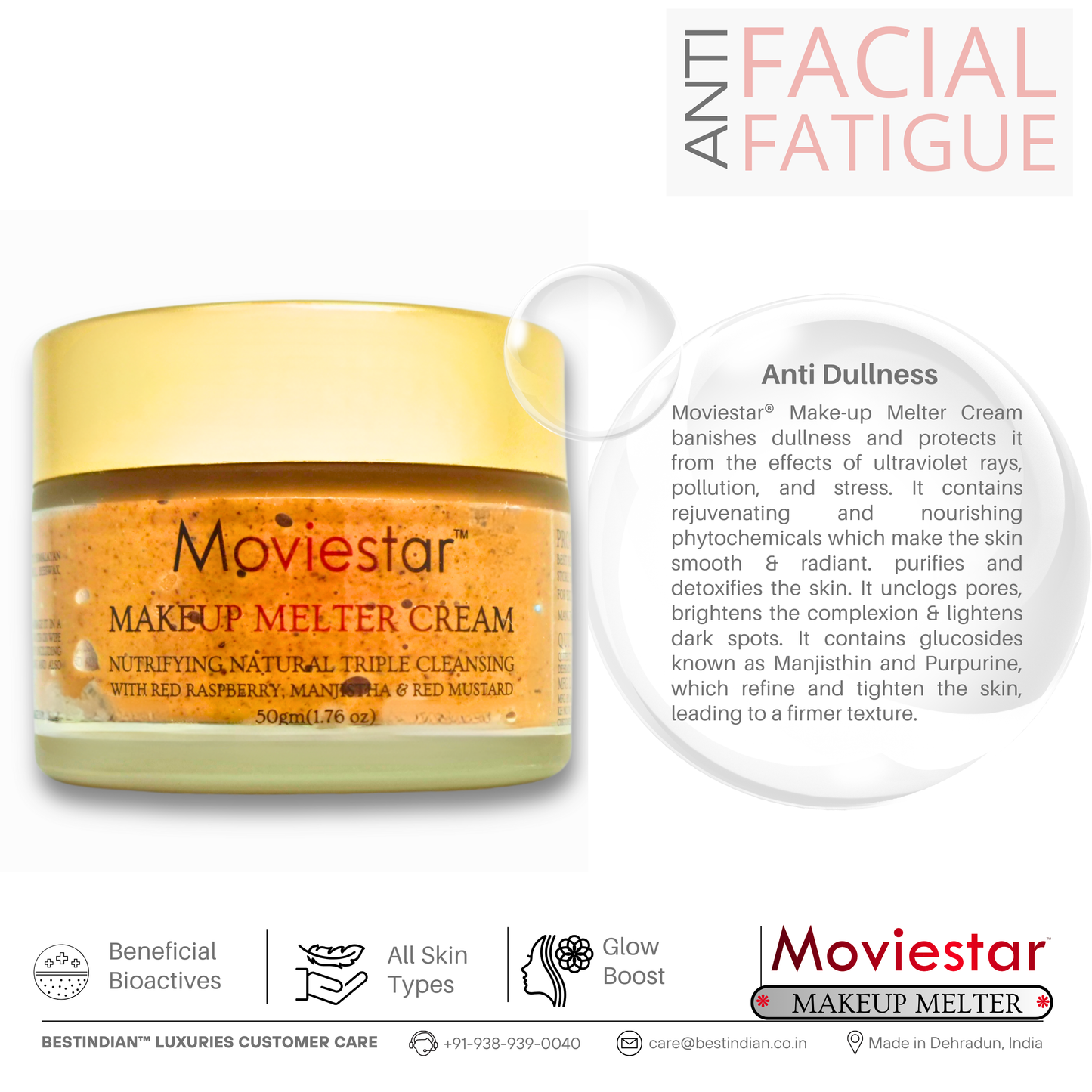


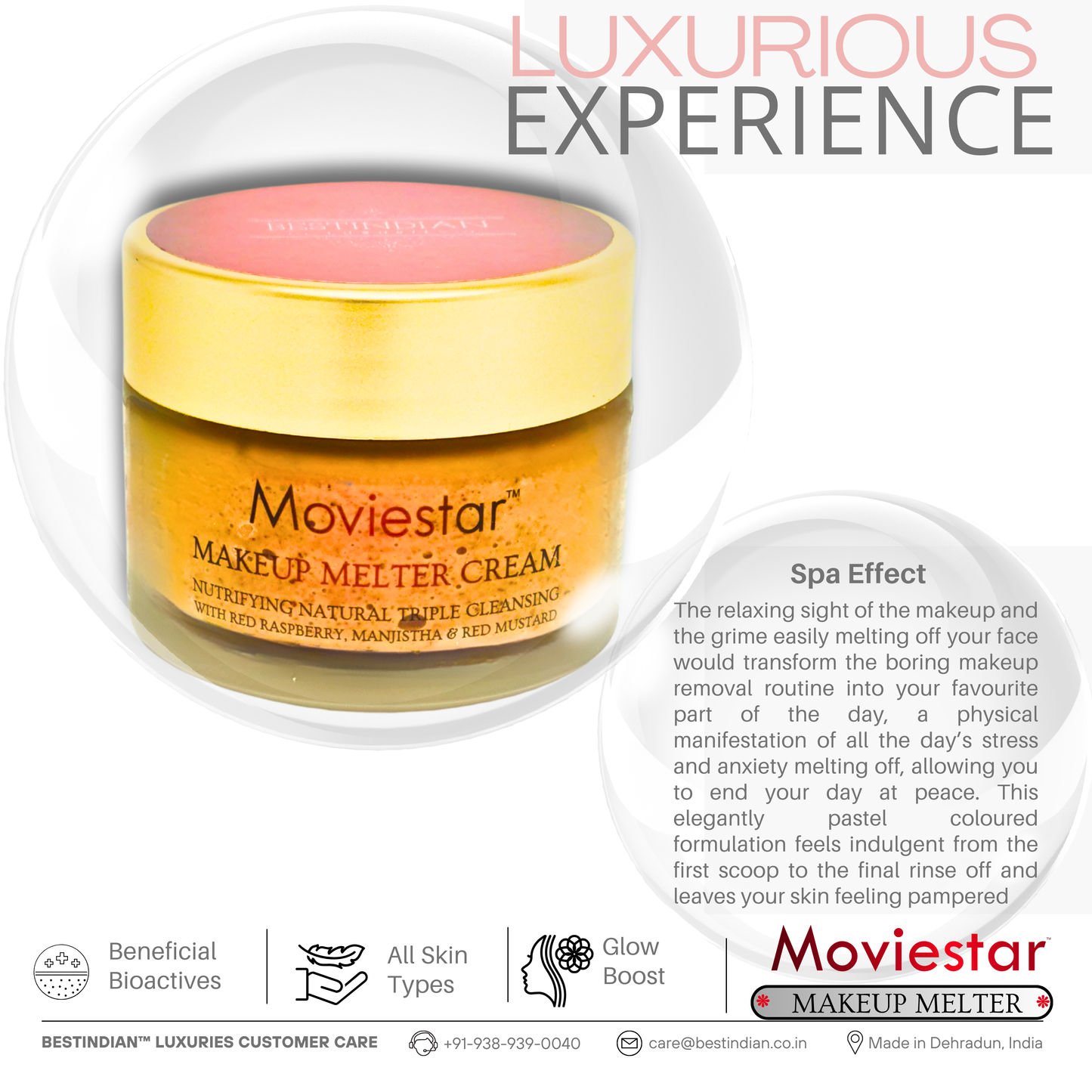

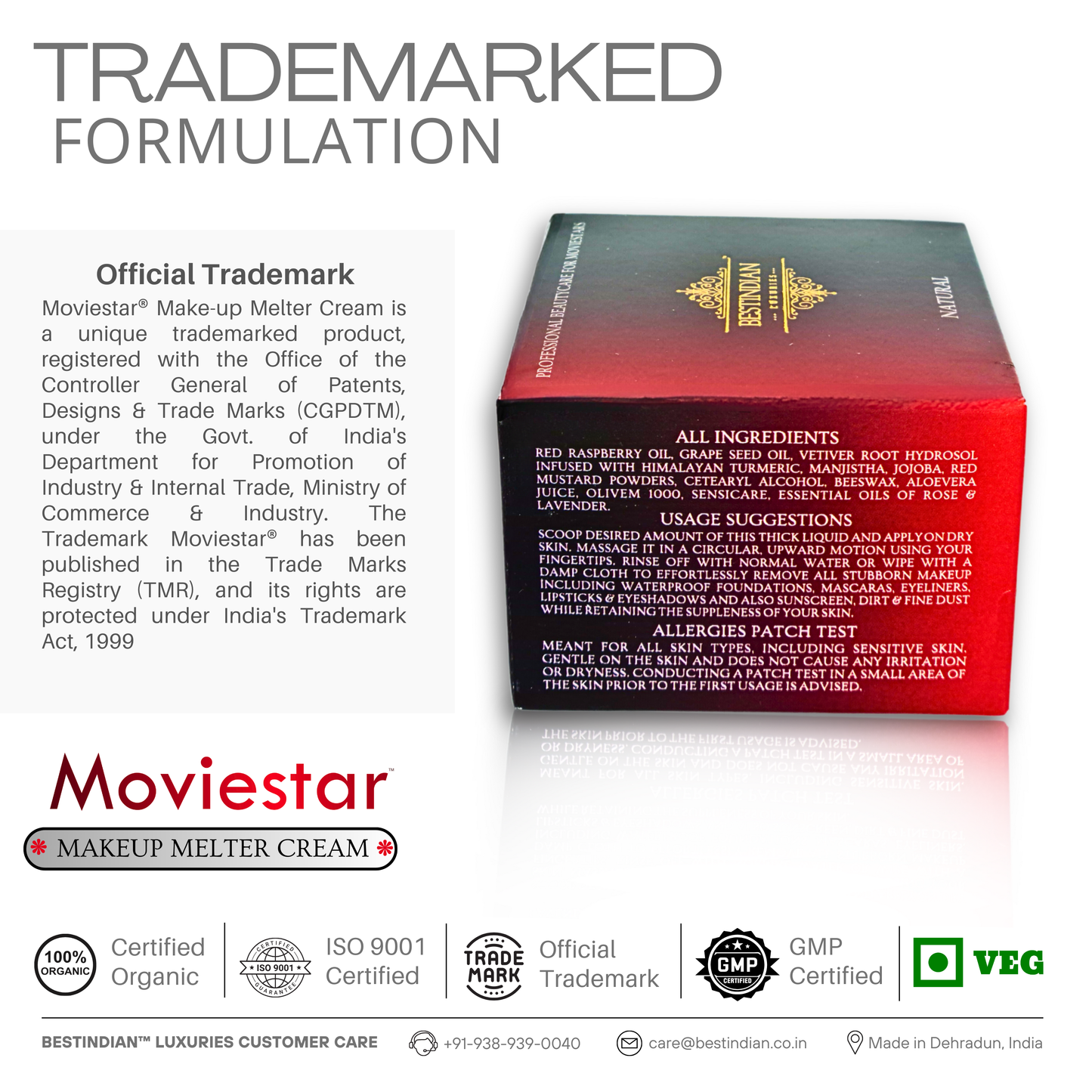



BESTINDIAN LUXURIES
The Finer Details
Why You’ll Love It
This is a one of a kind Makeup remover cream that melts waterproof makeup, hydrates sensitive skin, and is the eco-conscious alternative to wipes.
- Makeup remover cream that removes waterproof makeup — Triple-action deep cleanse formula dissolves mascara, lipstick, foundation & sunscreen in seconds with no harsh rubbing.
- Protects sensitive skin — Gentle formula respects your skin’s acid mantle & pH balance, avoiding irritation or dryness.
- Flawless, camera-ready finish — Preps skin for makeup, smoothing texture & preventing cakiness on selfies or video.
- Eco-friendly makeup wipe alternative — A sustainable, zero-waste solution that nourishes skin while protecting the planet.
- Hydrating makeup remover cream — Infused with Red Raspberry Oil & phytochemicals to leave skin supple, soft, and glowing.
All Benefits
⚜️ A Superior, Deeper Cleanse
- Triple-Action Formula: Our cream works in three ways: it instantly dissolves makeup, lifts trapped impurities and pollutants from deep within the pores, and gently removes excess oil, all in a fraction of the time of traditional cleansers.
- Melts the Unmeltable: It effortlessly breaks down and melts away the most stubborn, long-wear and waterproof makeup, including liquid lipsticks, full-coverage foundations, and resilient mascaras and eyeliners.
- Rinses Completely Clean: The formula is designed to rinse away quickly and easily without leaving behind any sticky, greasy, or oily residue, ensuring your pores remain clean and uncongested.
⚜️ Barrier Protection & Hydration
- Respects the Acid Mantle: Unlike harsh cleansers, our cream protects and nourishes your skin's vital acid mantle, helping to balance its natural pH levels and prevent both excessive dryness and oiliness.
- Prevents Moisture Loss: By cleansing without stripping the skin's natural oils, it actively prevents the tight, dry, stretchy, and itchy feeling often associated with makeup removal.
- Nourishes & Moisturizes: The rich, luxurious, and creamy texture is infused with natural emollients and antioxidants that leave the skin feeling deeply hydrated, refreshed, and soothingly soft and supple.
⚜️ The Result: A Flawless, Radiant Canvas
- Gentle Enough for All Skin: The formula is exceptionally gentle, making it suitable for all skin types and safe for use on the delicate eye region.
- Refines and Brightens: It helps to remove dull, dead skin cells and impurities, which can reduce the appearance of skin tan and tighten the pores for a more refined texture.
- Prepares for a Perfect Look: By creating a perfectly clean, hydrated, and balanced canvas, it leaves your skin healthy, glowing, and ready for a flawless makeup application or a confident, bare-faced day.
Why It’s Superior to Wipes
- Wipes don’t truly cleanse. They smear makeup and pollutants into pores, leading to congestion. Our cream dissolves residue completely.
- Wipes damage skin. The physical tugging causes micro-tears and can contribute to premature aging. Our cream melts makeup on contact with no friction.
- Wipes strip the barrier. Harsh surfactants disrupt your skin's pH, causing dryness. Our cream protects the acid mantle while restoring hydration.
Moviestar™ Makeup Melter Cream combines Red Raspberry Oil & Manjishtha to cleanse, protect, and hydrate—without the damage of wipes.
Your Ritual & Care
This is your complete guide to achieving a flawless, restorative cleanse. Follow these steps to ensure the best results for your skin.
⚜️ Who It's For
- Daily Makeup Users: Perfectly formulated for actors, professionals, and anyone who wears makeup daily and requires a thorough, non-stripping cleanse.
- All Skin Types: Gentle enough for all skin types, including sensitive and acne-prone skin, as it respects the skin's natural pH balance.
- The Eco-Conscious Consumer: A sustainable, zero-waste, and biodegradable alternative to single-use makeup wipes.
- The Time-Conscious Individual: Ideal for those who need an effective, one-step solution to remove makeup, sunscreen, and pollutants without multiple cleansing rounds.
⚜️ Your Step-by-Step Ritual
- Apply to Dry Skin: Scoop a ten-rupee coin-sized amount of the cream with dry fingertips.
- Massage to Melt: Use gentle, upward circular motions for 30–60 seconds. Feel the cream transform into a silky oil as it dissolves every trace of makeup and impurities.
- Rinse with Lukewarm Water: The cream will emulsify into a light, milky texture that rinses away completely, leaving no residue.
💡 Pro Tip: For the ultimate camera-ready glow, follow with your favorite BestIndian™ serum or moisturizer while your skin is still slightly damp.
⚜️ Care & Storage
- Store in a cool, dry place away from direct sunlight to preserve the integrity of the natural ingredients.
- A patch test is recommended on a small area of skin prior to your first use.
- This product is for external use only. Best before 24 months from manufacturing.
Complete Your Ritual
Fragrance
A Pure, Calming Olfactory Experience
The scent of the Moviestar™ Makeup Melter Cream is an integral part of its restorative ritual. Our fragrance is crafted exclusively from 100% natural and certified organic botanical extracts—never synthetic perfumes or parabens.
⚜️ Top Note: Organic Lavender
The experience begins with the delicate, herbaceous aroma of pure Lavender. Sourced for its calming properties, this note provides a sense of immediate tranquility, helping to soothe the mind and skin at the end of a long day.
⚜️ Heart Note: Organic Rose
As you massage the cream into your skin, the heart of the fragrance emerges: a fresh, sweet, and subtly spicy Damask Rose. This is not an overpowering floral, but a sophisticated, true rose note with powdery and green undertones that feels both luxurious and comforting.
This gentle, therapeutic blend transforms your daily makeup removal into a moment of serene indulgence.
Ingredient Transparency
At BestIndian™, we believe in absolute transparency. We are proud of the purity and efficacy of our formulas and disclose every single ingredient used.
⚜️ Our Full Formula (INCI)
Rubus Idaeus (Red Raspberry) Seed Oil, Vitis Vinifera (Grape) Seed Oil, Vetiveria Zizanoides (Vetiver) Root Water, Curcuma Longa (Turmeric) Root Extract, Rubia Cordifolia (Manjistha) Root Extract, Simmondsia Chinensis (Jojoba) Seed Oil, Brassica Juncea (Red Mustard) Seed Powder, Cetearyl Alcohol, Cera Alba (Beeswax), Aloe Barbadensis (Aloe Vera) Leaf Juice, Cetearyl Olivate, Sorbitan Olivate, Ethylhexylglycerin (and) Phenoxyethanol (Sensicare), Rosa Damascena (Rose) Flower Oil, Lavandula Angustifolia (Lavender) Oil.
⚜️ A Note on Skin Sensitivity
Our formula is crafted with natural ingredients known for their gentle properties. However, as with any new skincare product, we recommend reviewing the full ingredient list to ensure it is suitable for you. A patch test on a small area of skin is always recommended prior to first use.
Frequently Asked Questions
⚜️ Is this safe for sensitive or acne-prone skin?
Yes, absolutely. It was formulated specifically for sensitive, stressed skin. The natural, pH-balanced, and non-comedogenic formula respects the skin's delicate barrier, cleansing thoroughly without causing the irritation or dryness that can trigger sensitivity and breakouts.
⚜️ How is this different from makeup wipes?
The difference is significant. Wipes require harsh rubbing that can cause micro-tears, and they use chemical surfactants that strip the skin's natural oils. Our cream melts makeup on contact with nourishing botanicals and rinses completely clean, protecting your skin's health while also being a zero-waste, eco-friendly alternative.
⚜️ Will it remove stubborn waterproof makeup?
Yes. It is expertly formulated to dissolve even the most resilient waterproof mascara, long-wear foundation, and matte liquid lipsticks quickly and effortlessly, without any tugging on the skin or leaving a greasy after-feel.
⚜️ How does it make skin "camera-ready"?
A flawless finish for selfies, videos, or virtual meetings starts with a perfect canvas. The Camera Pro™ formula removes every trace of residue that can cause makeup to look cakey. It also deeply hydrates and smooths the skin, creating the ideal base for a seamless makeup application.
⚜️ Is it vegan and cruelty-free?
Yes. The formula is 100% vegan, and we are a certified cruelty-free and carbon-neutral brand.
⚜️ Can men use it?
Absolutely. The Moviestar™ range is designed for professionals—actors, content creators, and anyone exposed to daily makeup, grime, or urban pollution, regardless of gender.
The Science & Sensory Experience
🔬 The Science & Sensory Experience
A Ritual of Restoration
From the first scoop, Moviestar™ Makeup Melter Cream transforms cleansing into luxury. The natural fragrance of Rose & Lavender calms the senses. Its creamy texture melts on contact, dissolving the day’s makeup and pollutants. With each massage, stress seems to vanish, leaving skin calm, radiant, and deeply moisturized.For the discerning user who seeks to understand the "why" behind the results, this section details the scientific principles that make the Moviestar™ Makeup Melter Cream exceptionally effective.
Our philosophy fuses the wisdom of Ayurveda with the precision of modern dermatology. The Moviestar™ Makeup Melter Cream is not just a cleanser; it is a scientifically formulated product designed with ingredients that work in harmony with your skin's natural biology.
⚜️ Advanced Delivery for Deeper Efficacy
Our formula is engineered with emollients that are understood to utilize three key pathways for topical delivery. The cream's natural lipids can travel between skin cells (intercellular) and through hair follicles (transfollicular), allowing our potent botanical actives to be delivered where they can effectively dissolve trapped impurities, rather than just cleaning the surface.
⚜️ Core Mechanism: A Multi-Pronged Antioxidant Defense
Daily life, particularly exposure to UV radiation, is known to generate damaging free radicals (ROS) that can cause oxidative stress, a primary driver of inflammation and visible signs of aging. Our formula contains Red Raspberry Extract, an ingredient celebrated for its powerhouse of phytochemicals that provide a multi-pronged defense against this damage. Studies on this ingredient suggest it:
- Helps activate the Nrf2 pathway, considered the skin's "master antioxidant switch."
- Helps calm inflammatory pathways like COX-2, reducing the appearance of redness and stress caused by environmental exposure.
- Contains a rich concentration of antioxidants, like flavonoids and tannins, which are known to neutralize the free radicals that can lead to premature aging.
⚜️ The Synergy of Ayurveda and Dermatology
This is where our philosophy comes to life. For centuries, Ayurveda has identified powerful botanicals like Manjishtha and Red Raspberry for their remarkable skin-purifying and protective properties. Modern dermatology now allows us to understand why these ingredients work on a molecular level. We don't just use these ingredients for their story; we select them for their scientifically studied and well-documented benefits.
Star Ingredients
-

Red Raspberry
Rich in fatty acids and antioxidants, it hydrates, soothes inflammation, and helps protect from environmental stressors like UV & pollution. Red raspberry (Rubus idaeus) contains essential fatty acids, including linoleic acid, oleic acid, alpha-linolenic acid, and gamma-linolenic acid which moisturize, protect the skin, combat signs of aging and breakouts, and support the skin barrier.
-

Manjishtha
A revered Ayurvedic purifier that helps unclog pores, brighten dark spots, and refine skin texture. Manjistha (Rubia cordifolia) purifies and detoxifies skin. Manjishtha, a blood purifier, unclogs pores, makes the complexion even and lightens dark spots. It contains glucosides known as Manjisthin and Purpurine, which refine and tighten the skin, leading to a firmer texture.
-

Red Mustard
Red Mustard (Brassica juncea) is loaded with mineral called selenium, and bioactive compounds including Anthocyanins, vitamins A, C and K, and a large number of acylated cyanidin-based anthocyanins, etc., with antioxidant, anti-inflammatory and detoxifying properties.

Trust & Transparency
The BestIndian™ Promise
At BestIndian™, we believe luxury is defined by authenticity & efficacy. Our philosophy marries the timeless wisdom of Ayurveda with the precision of modern science. We disclose all ingredients used in every product we make, because your trust is our most valued asset.
⚜️
Our Promise: Formulated with 100% natural and certified organic ingredients. Always free from preservatives, parabens, and sulfates. Vegetarian and vegan friendly. No hidden ingredients.
⚜️
Our Certifications: Manufactured in a GMP, ISO & COSMOS Organic certified, carbon-neutral, cruelty-free facility amidst pollution-free environment of the Himalayas in Dehradun, India
OUR BRANDS
-

Moviestar™ – Luxury Ayurvedic Skincare brand by BestIndian™
Luxury skincare designed for professional actors. Moviestar™ by BestIndian™ is a premium...
-

GlowPotion™ – Natural Ayurvedic Skincare brand by BestIndian™
The pinnacle of beauty is a complexion that requires no makeup to...
-

The Elixir of Youth™ Collection for Anti-Aging & Wrinkle Repair
Welcome to Elixir of Youth™- scientifically created, high-performance Ayurvedic formulations designed by...
